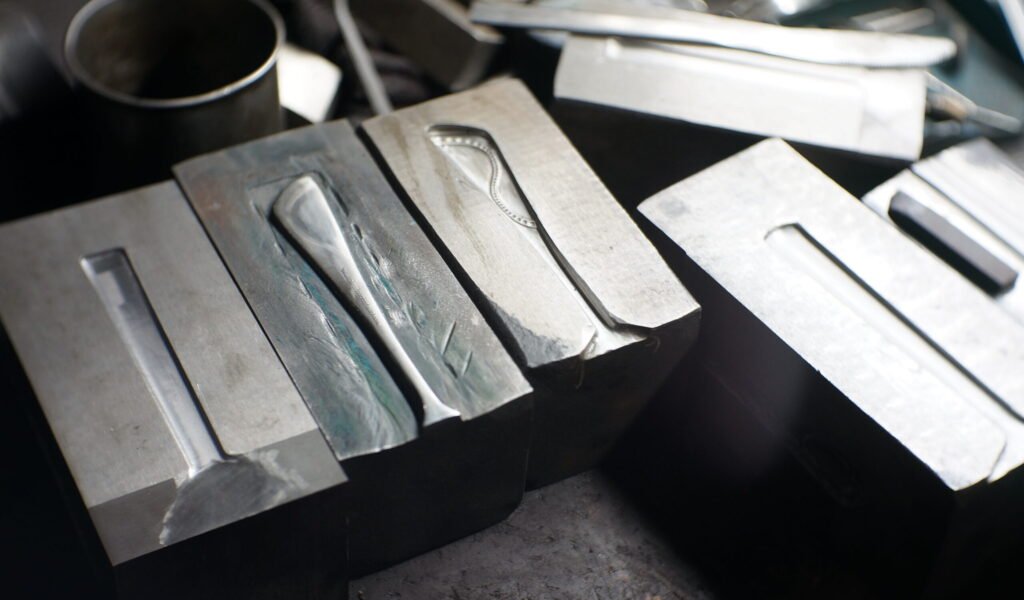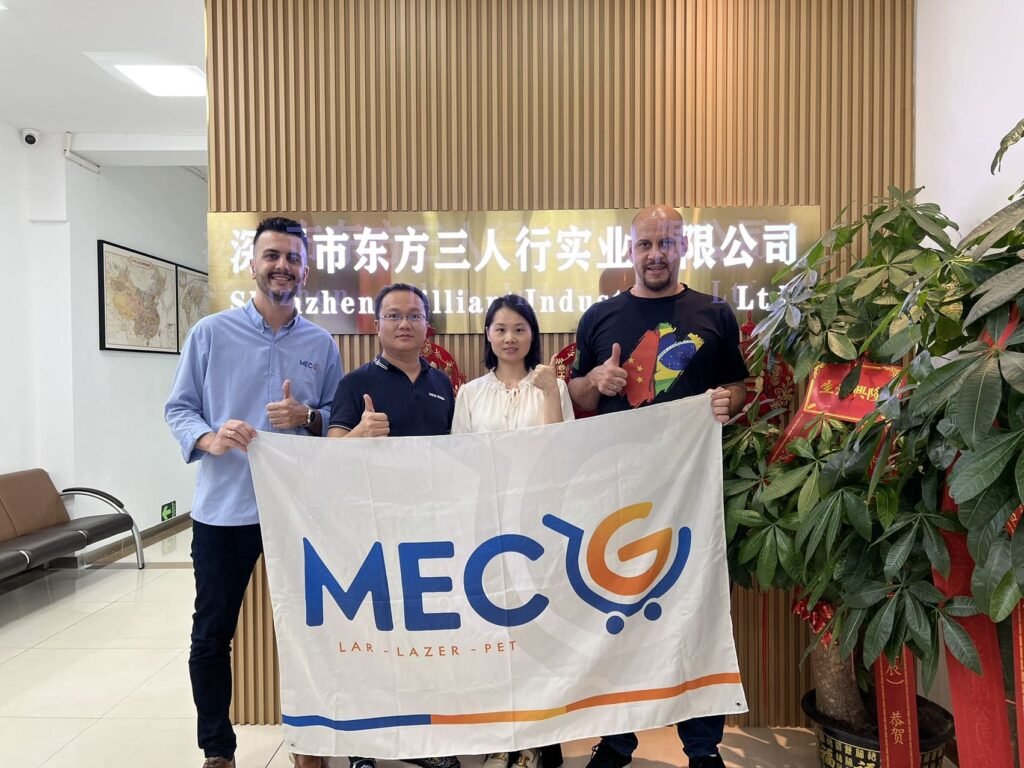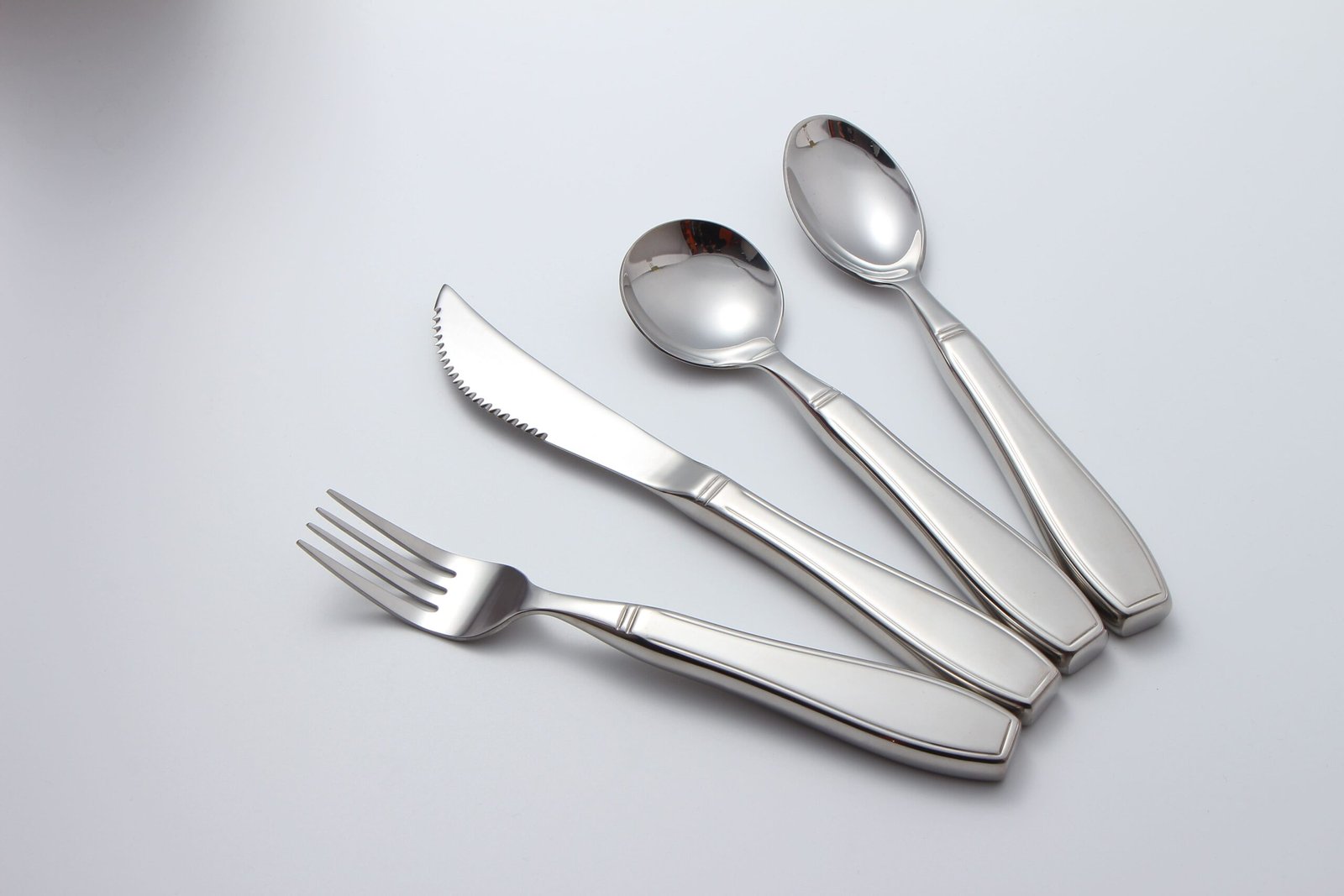Choosing the wrong ODM partner can jeopardize your brand. How do you ensure you’re partnering with the right cutlery manufacturer in China?
Reliable ODM manufacturers exhibit consistent product quality, clear communication, verified certifications, scalable production capacity, robust R&D capabilities, and transparent pricing structures to ensure successful partnerships.
Selecting an ODM cutlery manufacturer involves detailed research and critical evaluation. Let’s explore essential criteria to ensure you make a confident, informed decision.
Table of Contents
How to find reliable manufacturers in China?
Finding trustworthy manufacturers in China can be overwhelming; partnering with the wrong supplier means risking your entire business reputation.
Reliable manufacturers in China can be found by using reputable sourcing platforms, attending industry trade fairs, checking references, and ensuring manufacturers have proper certifications and transparent business practices.
To deeply evaluate manufacturers, I recommend using multiple methods instead of relying on a single source. From my experience, there are three main ways you can find reliable manufacturers in China:
1. Industry Trade Fairs
Trade fairs like the Canton Fair provide excellent opportunities to meet suppliers face-to-face. Attending these events has allowed me to personally assess manufacturers’ products and gauge their credibility firsthand.
2. Online Platforms
Websites like Alibaba or Made-in-China can be very helpful, but they must be approached carefully. Ensure you utilize features like verified badges and premium supplier status. From personal experience, premium memberships are often an indicator of commitment to quality and reliability.
3. Referrals and Networking
Nothing beats direct references from peers within the industry. Ask trusted contacts or business associates for recommendations. It’s often the quickest way to find reliable manufacturers who already have a proven track record.
| Method | Advantages | Disadvantages |
|---|---|---|
| Trade Fairs | Direct interaction, quality check on-site | Time-consuming, costly |
| Online Platforms | Convenient, large variety of options | Risk of scams, need thorough vetting |
| Referrals | Trustworthy, quick results | Limited options, potential conflicts of interest |
Remember, always cross-reference multiple sources. Never rely solely on one channel. Combining these strategies gives you the best chances of finding reliable and consistent suppliers.
What is OEM in China?
If you’re unclear about OEM, you could unintentionally choose the wrong manufacturing service, causing significant setbacks to your project.
OEM (Original Equipment Manufacturer) in China refers to manufacturers producing goods designed and specified by another company. The OEM manufactures products under your brand, based strictly on your provided specifications and standards.
OEM is widely used in China, particularly in the cutlery industry. Understanding OEM is essential because it differs significantly from ODM (Original Design Manufacturer).
Key Differences Between OEM and ODM:
| Aspect | OEM (Original Equipment Manufacturer) | ODM (Original Design Manufacturer) |
|---|---|---|
| Product Design | Provided by the buyer | Created by the manufacturer |
| Brand Ownership | Buyer’s brand | Buyer or manufacturer’s brand |
| Cost | Generally lower design cost | Higher initial design cost |
| Flexibility | Less flexibility after initial specifications | More adaptable with existing designs |
As someone who has collaborated extensively with OEM manufacturers, I can tell you OEM is ideal if you already have precise product designs and technical drawings. You maintain full control over the design and quality criteria, but you bear the responsibility for any design flaws.

Challenges with OEM
OEM comes with challenges, such as the necessity of clear communication. Misinterpretation of designs by the manufacturer can lead to expensive corrections and delays. I’ve learned to mitigate this by always using detailed drawings, specifying exact standards, and scheduling regular quality checks.
How to get a manufacturer from China?
Finding a manufacturer from China seems easy until you encounter difficulties in communication or quality inconsistencies, potentially risking your entire supply chain.
To get a manufacturer from China, start by clearly defining your product needs, researching reputable manufacturers online, attending trade shows, conducting due diligence, and verifying quality certifications before entering negotiations.
Let me break down the process clearly based on my extensive experience:
Step 1: Clearly Define Product Requirements
You must have clear specifications, including material type, dimensions, standards (FDA, LFGB), and expected quality levels. Without clarity, miscommunications are almost guaranteed.
Step 2: Initial Research
Use online platforms or trade directories to shortlist potential manufacturers. Ensure you assess suppliers who specifically handle your product type.
Step 3: Vetting & Verification
Cross-check each manufacturer’s certifications (ISO, BSCI, FDA). Always request references or testimonials. A quick background check can save tremendous headaches.
Step 4: Sampling
Request samples. Evaluate carefully against your specifications. This step has always helped me quickly eliminate unsuitable manufacturers.
| Step | Importance | Common Mistakes |
|---|---|---|
| Define Requirements | Avoids misunderstandings | Vague specifications |
| Initial Research | Finds suitable manufacturers | Insufficient research |
| Vetting | Ensures legitimacy | Overlooking certification |
| Sampling | Validates actual quality | Skipping sample checks |
By following this methodical approach, you significantly increase your odds of finding a reliable Chinese manufacturer.
How do I verify a manufacturer in China?
Verifying a manufacturer can feel overwhelming; skipping proper verification often leads to disastrous financial and reputational damage.
Verify a manufacturer in China by examining their certifications (ISO, BSCI), checking references, visiting the factory personally or hiring third-party inspectors, and reviewing online feedback and compliance documents.
Here’s a detailed verification process that I have consistently used:
Key Documents for Verification
| Document Type | Purpose | Importance |
|---|---|---|
| Business License | Confirms legal existence | Essential |
| ISO & BSCI Certificates | Quality & ethical compliance | Crucial |
| Product Certifications | Compliance with global standards | Essential |
Factory Visits
Personally inspecting manufacturing facilities is invaluable. It reveals actual working conditions, product quality, and helps build trust.

Third-Party Inspections
If you can’t visit personally, hiring companies like SGS or Bureau Veritas is highly effective. Independent inspectors provide detailed and objective reports.
Never underestimate the importance of thorough verification. Spending extra effort here greatly reduces risks later on.
How to find an ethical manufacturer in China?
Choosing unethical manufacturers not only harms your brand but also supports poor working conditions and environmental damage.
To find an ethical manufacturer in China, focus on factories certified by BSCI or SA8000, personally inspect facilities, review sustainability reports, and speak directly with factory management about their labor and environmental policies.
Ethical manufacturing goes beyond certifications. Let’s dissect this issue critically:
Indicators of Ethical Practices
– Clear labor policies (working hours, fair wages)
– Transparent environmental strategies (recycling, waste management)
– Evidence of community involvement or social responsibility programs
| Criteria | Positive Indicators | Red Flags |
|---|---|---|
| Labor Conditions | Open policies, clear communication | No transparency, frequent overtime |
| Environmental Standards | Detailed sustainability reports | Lack of concrete plans |
| Certifications | BSCI, SA8000, ISO14001 | Lack of certifications or expired certificates |
Always verify these criteria carefully to ensure you partner with genuinely ethical manufacturers.
How to buy directly from China manufacturers?
Buying from China directly might seem daunting at first, but missing out means losing substantial cost-saving opportunities.
To buy directly from China manufacturers, clearly communicate your requirements, negotiate favorable payment terms, confirm product quality via samples, and use reliable shipping and logistics providers to handle international shipping efficiently.
Direct buying involves careful handling of several key aspects:
Important Steps:
– Communicate clearly about pricing, minimum order quantities (MOQs), and lead times.
– Always arrange detailed agreements specifying payment terms (e.g., deposit, balance upon shipment).
– Arrange independent inspections before final payment.
| Aspect | Best Practice | Common Pitfalls |
|---|---|---|
| Pricing Negotiation | Clear, detailed quotes | Accepting vague quotes |
| Payment Terms | Secure methods like L/C, Escrow | Direct transfers without security |
| Quality Assurance | Independent inspection reports | Trusting verbal assurances |
Following these clear steps greatly enhances your buying experience and reduces risks.
Does the Manufacturer Have Verifiable Certifications?
Imagine investing significant resources only to discover your products don’t meet global safety standards. Isn’t that terrifying?
Reliable ODM manufacturers hold industry-standard certifications like LFGB, FDA, and ISO 9001, proving compliance with international quality and safety regulations and enhancing your market credibility.
Ensuring that your ODM cutlery partner has the right certifications is crucial. Certifications aren’t just documents—they’re guarantees that the manufacturer complies with recognized international safety, quality, and ethical standards. Let me break down some important certifications you should verify.
Essential Certifications Explained:
| Certification | Description | Importance for Cutlery |
|---|---|---|
| LFGB | European Food Safety Regulation | Mandatory for EU markets; ensures no harmful substances |
| FDA | U.S. Food & Drug Administration | Critical for North American markets; indicates products are safe for food contact |
| ISO 9001 | Quality Management System | Ensures consistent production processes and quality control |
| BSCI | Business Social Compliance Initiative | Demonstrates ethical business practices and worker safety |
Certifications should not be taken at face value. Always verify them through official databases or ask for proof directly from certification authorities. This due diligence reduces risks associated with product recalls, import rejections, or regulatory non-compliance.
Beyond certification verification, consider if the manufacturer participates regularly in independent third-party audits. These audits confirm ongoing adherence to standards. If they pass such audits regularly, it signifies a deeper commitment to quality and compliance.
Remember, a certified ODM manufacturer doesn’t only mean compliant products. It signifies a responsible partner who proactively safeguards your brand reputation.

Can the Manufacturer Consistently Guarantee Product Quality?
Have you ever worried about receiving products that fail to meet your expectations?
Dependable ODM cutlery manufacturers maintain stringent quality control processes, from material sourcing to finished product inspections, ensuring consistent high-quality products aligned with your brand standards.
Consistent product quality from your ODM partner doesn’t happen by chance. It’s a structured, deliberate effort. Let’s explore critical aspects of their quality assurance processes to identify a trustworthy manufacturer.
Essential Quality Assurance Processes:
| QA Aspect | What It Involves | Importance |
|---|---|---|
| Raw Material Testing | Verifying stainless steel grades and purity | Ensures durability and corrosion resistance |
| Production Audits | Regular inspections during manufacturing | Detects issues early, reducing defective batches |
| Final Product Testing | Rigorous checks on durability, aesthetics, and compliance | Confirms product meets market and customer expectations |
When choosing a manufacturer, visit their factory or arrange a virtual tour. Check their testing facilities, equipment conditions, and storage areas. Manufacturers committed to quality openly showcase their processes.
Additionally, assess their quality documentation practices. Reliable ODM suppliers will readily share inspection reports, testing certificates, and previous batch records. They will willingly explain their quality standards and procedures.
From personal experience, collaborating with manufacturers who emphasize proactive quality management significantly reduces potential setbacks. Such proactive manufacturers contribute directly to your brand’s long-term growth.
Does the Manufacturer Offer Transparent Pricing?
Have hidden costs ever made your project unexpectedly exceed your budget?
Reliable ODM manufacturers provide transparent, detailed pricing structures, clearly outlining all costs involved, avoiding hidden fees, and enabling accurate budget planning and cost management.
Transparent pricing isn’t merely beneficial—it’s essential. Pricing ambiguity can lead to mistrust, strained relationships, and project delays. Let’s dissect what transparent pricing should look like.
Components of Transparent Pricing:
| Pricing Component | Description | Why It’s Important |
|---|---|---|
| Material Costs | Clear breakdown of steel grades and market rates | Prevents unexpected fluctuations |
| Labor Costs | Explanation of hourly or per-unit labor charges | Ensures clarity on production costs |
| Mold and Tooling Fees | Clearly stated upfront mold charges | Avoids hidden upfront expenses |
| Shipping and Handling | Explicit shipping terms and fees | Reduces logistical surprises |
In my experience, ODM partners who provide clear, upfront pricing tend to be more professional and trustworthy. These manufacturers are committed to transparency and understand that building long-term partnerships requires honesty in financial dealings.
Does the Manufacturer Have Strong R&D Capabilities?
Ever wondered how your competitor launched an innovative product ahead of you?
Top ODM cutlery manufacturers invest heavily in research and development, possessing skilled design teams and advanced technology, enabling innovation and differentiation in competitive markets.
Manufacturers with strong research and development capabilities are strategic partners who add value beyond mere production. Let’s analyze the significance of strong R&D capabilities.
Indicators of Strong R&D Capabilities:
| Indicator | Description | Benefit |
|---|---|---|
| Design Innovation | Regular introduction of unique designs | Keeps your brand competitive and fresh |
| Prototyping Speed | Rapid prototype turnaround | Reduces time-to-market |
| Customization Ability | Ability to tailor designs to specific brand needs | Enhances brand differentiation |
| Technology Investment | Use of advanced manufacturing technologies | Ensures product precision and consistency |
Visit their R&D department or inquire about recent innovations they’ve developed. The presence of a dedicated, skilled team and modern CAD systems indicates readiness for innovation.
ODM partners with strong R&D skills will also actively suggest design improvements, alternative materials, or cost-saving solutions. They won’t just execute your design—they’ll actively enhance it.
I’ve personally benefited from collaborating with ODM manufacturers with proactive R&D teams. They have not only met but often exceeded my initial expectations, contributing significantly to the market success of my products.
Choose ODM cutlery manufacturers who demonstrate certification compliance, consistent quality assurance, transparent pricing, and robust R&D capabilities to secure your brand’s future success.





